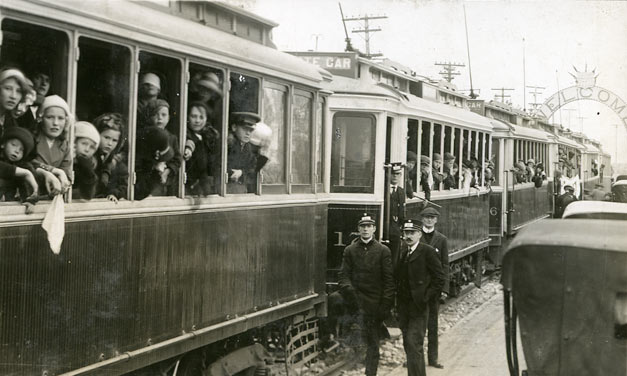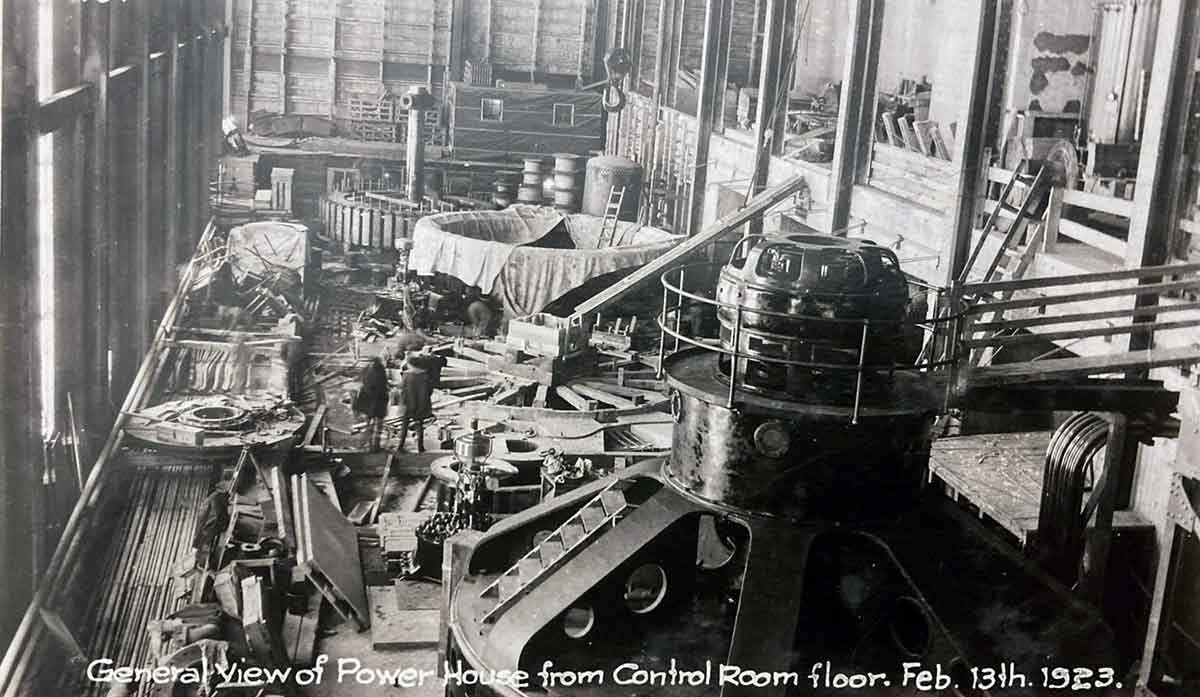Great Falls Generating Station celebrates 100 years of reliable operation
Great Falls Generating Station is one of the most enduring examples of Manitoba Hydro’s promise to bring its customers Energy for Life. It is Manitoba Hydro’s second-oldest generating station (after Pointe Du Bois), and as of 2023, Great Falls has been generating power for 100 years. It recently won a Hydro Hall of Fame Award at Hydrovision 2023 for that very reason.
Developed by the Winnipeg Electric Railway Company (or WERCo. — an early forerunner of Manitoba Hydro), it’s almost a forgotten fact the initial spark for developing clean, reliable hydropower in Manitoba wasn’t for lighting or heating, but for public transportation. The first of six generators in Great Falls went into service on January 3, 1923.
Watch a short video about Great Falls using archival pictures:
Construction on Great Falls began in 1914 but halted because of World War I. Construction restarted after the war in 1919, but financial constraints halted the project again until November 1921 — when WERCo.’s profits soared as more Winnipeg residents rode streetcars following the war.

Streetcars in Winnipeg in the early 1920s.
As Winnipeg’s fledgling suburbs expanded, WERCo. agreed to extend its streetcar lines to new communities in exchange for long-term deals to buy electricity for homes and businesses. By the 1920s, WERCo. had a monopoly on public transportation in a booming city — and by then, it had also ventured into heating and cooking gas manufacture and distribution. By 1922, WERCo. saw hydropower as the quickest way to bring more prosperity to a growing city and fatten its shareholder dividends.
During the construction of Great Falls, a sign in its powerhouse encouraged 2,000 workers to have the station “Running by Christmas.” It worked — Great Falls was built in record speed, despite the only access for construction materials and supplies being a single rail line. WERCo. shortened its name to Winnipeg Electric Company in April 1924 to reflect it was now in the business of generating and distributing electricity, even to rural areas.

The final units at Great Falls were added by November 4, 1928, as demand for electricity continued to grow — and in 1949, the provincial government created the Manitoba Hydro-Electric Board, a public authority to manage growing electrification following prosperous economic growth after World War II. The Manitoba Hydro-Electric Board purchased the Winnipeg Electric Company and all its assets in 1952, finalizing the amalgamation 1953. Rural electrification in the province was managed by a separate entity called the Manitoba Power Commission, and in 1961 it merged with the Manitoba Hydro-Electric Board to form the Manitoba Hydro of today.
As for Great Falls, it was extensively updated in the 1940s and early 1980s and is now the base for Manitoba Hydro’s Winnipeg River operations. Although the last streetcar in the province ran in 1955, Great Falls continues to provide power to the MISO grid, with a capacity of 129 megawatts and annual generation of 750 million kilowatt-hours.
One hundred years and counting. That’s Energy for Life.
